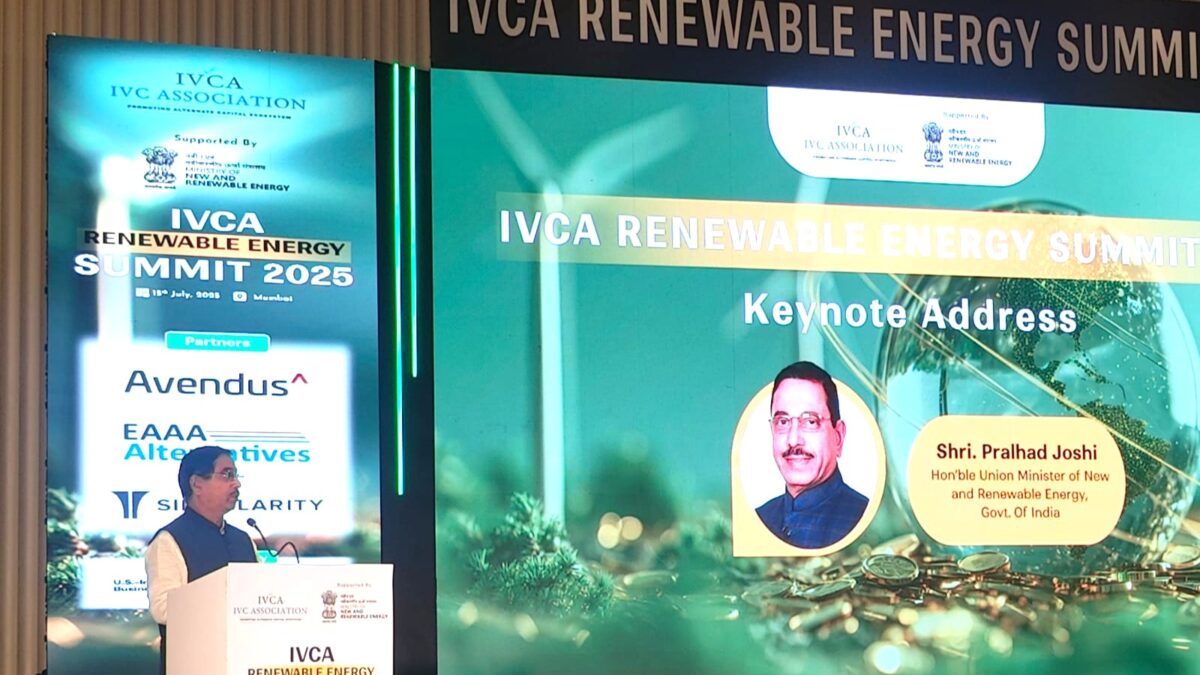India Reaches 50% Non-Fossil Power Capacity, Beating 2030 Target by 5 Years
India hits 50% non-fossil power capacity milestone, fast-tracking its renewable energy goals ahead of 2030.
India has achieved a significant milestone in its clean energy transition, with non-fossil fuel sources now accounting for 50 percent of the country’s installed electricity capacity, five years ahead of its 2030 target under the Paris Agreement.
The Ministry of New and Renewable Energy said on Monday that India’s installed non-fossil capacity — comprising renewable energy, large hydro and nuclear — stood at 242.78 gigawatts as of June 30, out of a total capacity of 484.82 GW. Thermal power, largely coal-based, accounted for 49.92 percent.
The achievement endorses India’s growing role in global climate action, despite its per capita emissions remaining among the lowest in the Group of 20 countries.
Modi Government’s Green Push
“In a world seeking climate solutions, India is showing the way,” said Union Minister for New and Renewable Energy Pralhad Joshi in a statement. “Achieving 50 percent non-fossil fuel capacity five years ahead of the 2030 target is a proud moment for every Indian.”
India’s clean energy momentum has been fueled by policies such as the Pradhan Mantri Kisan Urja Suraksha evam Utthaan Mahabhiyan or PM-KUSUM, which supports solar-powered irrigation, and the PM Surya Ghar: Muft Bijli Yojana, aimed at deploying rooftop solar for one crore households.
Large-scale solar parks, hybrid wind-solar policies and expanding bioenergy programs have also helped drive down costs and expand clean power access, particularly in rural areas.
Inclusive Growth and Climate Co-Benefits
According to the ministry, the renewables push is delivering more than just emissions reductions. The sector has created rural employment, reduced air pollution, and improved access to electricity.
Wind energy, especially in Gujarat and Tamil Nadu, is supporting evening peak demand, while the bioenergy segment — once marginal — now plays a growing role in clean power generation and income diversification in the countryside.
“This is not just about decarbonization. It’s about energy justice, public health, and rural prosperity,” an MNRE press note said.
Global Standing Strengthened
India’s early achievement bolsters its image as a climate leader among emerging economies. It remains one of the few G20 nations on track to meet or exceed its Nationally Determined Contributions under the Paris climate pact.
At forums like the G20 and the UN’s annual climate summits, India has pushed for climate equity and sustainable lifestyles while emphasizing its own low-emissions development pathway.
Technology, Storage and the Road Ahead
Looking ahead, India plans to double per capita clean electricity use and invest heavily in digital and grid infrastructure to manage the intermittent nature of renewables. Battery storage, pumped hydro and artificial intelligence-driven grid systems will be critical to maintaining reliability.
“Artificial intelligence will be a force multiplier in managing India’s future energy system,” said the ministry, citing its potential in forecasting demand, improving grid efficiency, and enabling prosumer participation in energy markets.
However, increasing digitalization will also demand heightened cybersecurity, the ministry cautioned.
India is targeting 500 GW of non-fossil capacity by 2030 and net-zero emissions by 2070. With this early success, government officials say the country is on a strong trajectory to meet both.
Installed Electricity Capacity in India (as of June 30, 2025):
- Thermal: 242.04 GW (49.92 percent)
- Nuclear: 8.78 GW (1.81 percent)
- Large Hydro: 49.38 GW (10.19 percent)
- Renewables (excl. large hydro): 184.62 GW (38.08 percent)
- Total Non-Fossil Fuel Capacity: 242.78 GW (50.08 percent)
- Total Installed Capacity: 484.82 GW
Source: Press Information Bureau
Also Read:
India’s Power Demand to Double by 2032, Renewable Energy to Lead Transition
Nirmal Menon
Related posts
Subscribe
Error: Contact form not found.


